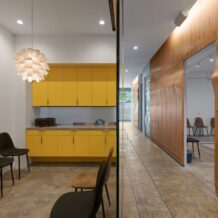Our Programs
Sober & Transitional Living
A Bridge to Your New Beginning
Recovery doesn't end with treatment; it's a journey that continues as you reintegrate into everyday life. Tulua Health's Transitional Living Program offers a nurturing bridge from the structured environment of rehab to the independence of a sober life.
Embrace Post-Treatment Life with Our Transitional Living Homes
The transition from inpatient treatment to everyday life can be daunting. Our Transitional Living Homes provide a supportive space where you can strengthen your sobriety while engaging with daily responsibilities. Whether it's returning to work, continuing education, or rebuilding personal relationships, our program is designed to support you every step of the way.
What is a Transitional Living Home?
Transitional Living Homes offer a unique blend of structure and freedom, allowing you to live independently while still receiving the support essential for recovery. These homes are:
- Structured Yet Flexible: Enjoy the balance of a guided environment with the autonomy to pursue your personal goals.
- Community-Oriented: Share space with peers who understand your journey and can offer support and camaraderie.
- Supportive: Access continuous care and resources to aid your recovery journey, with staff available 24/7 to assist with your needs.
Our Transitional Living "House Rules"
To ensure a safe and positive environment for all residents, our Transitional Living Homes operate under a set of universal house rules, including:
- Timely Payment of Rent and Utilities
- Regular Drug and Alcohol Screening
- Participation in House Meetings and Events
- Adherence to Curfews and Visitor Policies
- Respect for Housemates, Staff, and Property
These rules are designed to maintain a stable living environment conducive to continued recovery.
The Benefits of Transitional Living
Choosing our Transitional Living Program offers numerous advantages:
- A Sense of Community: Connect with others who share your commitment to sobriety.
- Stability and Support: Transition smoothly with the support of a structured living environment.
- Continued Treatment and Resources: Access ongoing therapy and support services to bolster your recovery.
- A Fresh Start: Lay the foundation for a new, sober life with the right support and guidance.
Costs & Insurance
The cost of living in our Transitional Living Homes is set at a base rent of $1,500, with a sliding scale available based on individual circumstances. While most insurance plans cover specific treatment costs, transitional living expenses are typically out-of-pocket. Tulua Health accepts most major healthcare and insurance providers, and we're committed to working with you to ensure affordability.
Take the Next Step with Tulua Health's Transitional Living
If you're seeking a supportive environment to transition into a sober lifestyle, our Transitional Living Program may be the perfect fit. Our co-ed homes, staffed round-the-clock, are designed to support your continued growth and recovery.
Contact us today to explore how Tulua Health's Transitional Living Program can support your journey to a new beginning.
Safe, Nurturing, Healing
Tulua Health is More Than a Recovery Center
Safety and support form the cornerstone of recovery at Tulua Health. We offer a nurturing environment that extends beyond treatment. Our facilities boast modern amenities, ensuring privacy, comfort, and a range of supportive programs. Here, every aspect of our sober living homes is designed to provide you with a sanctuary that you can proudly call home.

Beyond Traditional Methodology
A Novel Perspective on Recovery
We challenge conventional mental health care.
By addressing mental health trauma first, we find that substance abuse issues naturally begin to resolve. The staff at Tulua Health is skilled at guiding individuals towards a better life, providing patient and opportunity-rich treatment tailored to your needs.
We Accept Many Health Plans





It Starts here
Get a Free Health Coverage Verification
Wellness doesn't just happen. Our team of behavioral health specialists can help find the plan that is right for you. If you're ready for a new start, click below to submit a free health insurance verification request.



